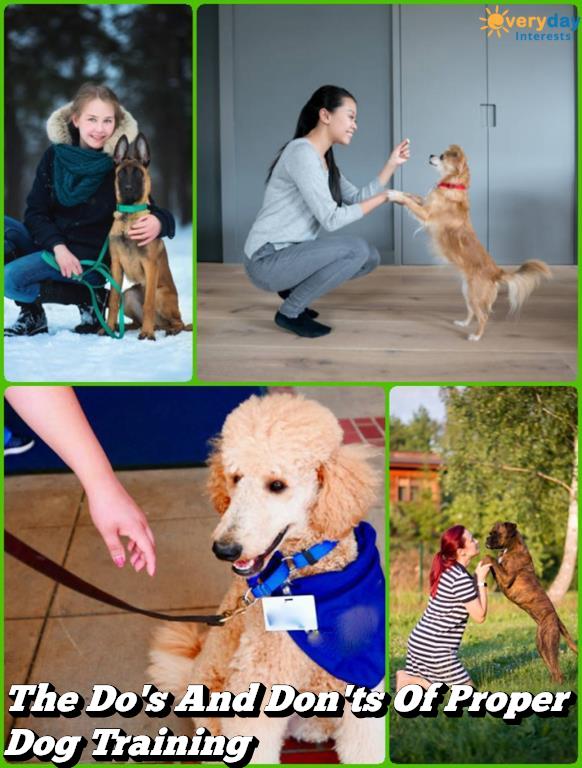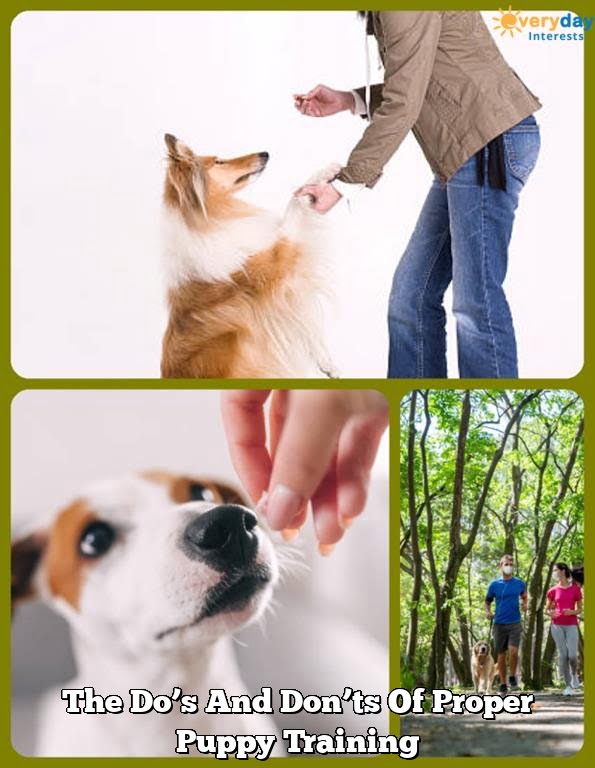Leashing training is crucial for the safety and well-being of your dog. In this introductory section, we will explore why leash training is essential, the benefits it brings to both you and your furry friend, as well as address common misconceptions about leash training.
When it comes to taking your dog for a walk, having control over their movements is vital. Leash training allows you to have that control, ensuring your dog’s safety by preventing them from running into dangerous situations or wandering off into unfamiliar areas. It also helps in preventing accidents and helps your dog develop good manners when interacting with other dogs or people.
Moreover, leash training has its advantages not only for your dog but for you too. By teaching your dog to walk calmly on a leash, you can enjoy peaceful and enjoyable walks together. It also fosters a stronger bond between you and your canine companion as you work together towards a common goal.
Before diving into the techniques of leash training, it’s important to address common misconceptions surrounding this practice. Some believe that using a leash is restrictive or that it limits their dog’s freedom. However, with proper training techniques, a leash can provide structure while still allowing for some independence during walks.
Now that we understand the importance of leash training and have debunked some misconceptions let’s move on to the next section: Getting Started: Preparing Yourself and Your Dog”.
Getting Started
When it comes to leash training your dog, preparation is key. This section will guide you through the important steps of getting started and ensuring that both you and your furry friend are ready for successful leash training.
Understanding your dog’s unique needs and behavior is crucial before beginning leash training. Each dog is different, with their own personality, energy level, and temperament. Take the time to observe and assess your dog’s behavior to tailor the training methods accordingly. For example, a high-energy breed may require more exercise before starting leash training to help them focus better during the sessions.
Selecting the appropriate leash and collar for your dog is another essential aspect of getting started. There are various types of leashes available, such as standard leashes, retractable leashes, and long lines. Consider your dog’s size, breed, and comfort when choosing a leash. Additionally, ensure that the collar or harness fits properly without causing any discomfort or restriction.
Introducing your dog to the concept of wearing a leash is an important step in preparing for successful leash training. Start by allowing your dog to become familiar with the leash by letting them sniff it and explore it at their own pace.
Gradually introduce the idea of wearing the leash around their neck or securing it to a harness. Be patient during this process and provide positive reinforcement, such as treats or praise, to create a positive association with the leash.
In summary, proper preparation plays a significant role in setting yourself and your dog up for success in leash training. Understanding your dog’s unique needs and behavior, selecting the appropriate equipment, and introducing the concept of wearing a leash gradually are key factors in getting started on the right foot.
| Preparation Steps | Description |
|---|---|
| Understanding Your Dog | Observe and assess your dog’s behavior to tailor training methods accordingly |
| Choosing the Right Leash | Select a leash that suits your dog’s size, breed, and comfort level |
| Introducing the Leash | Allow your dog to become familiar with the leash gradually and provide positive reinforcement during the process |
Basic Leash Training Techniques
When it comes to leash training your dog, it is crucial to start with the basics. Teaching your dog to walk calmly on a loose leash not only ensures their safety but also enhances the overall walking experience for both of you. Here are some basic leash training techniques to help you get started on the right path.
First and foremost, it is essential to use positive reinforcement when leash training your dog. This means rewarding your dog for desired behaviors such as walking beside you or maintaining a loose leash. You can use treats, praise, or even a favorite toy as a reward. By associating good behavior with rewards, your dog will be motivated to continue exhibiting those behaviors during walks.
Consistent and clear communication is also key during leash training. Use verbal cues such as “heel” or “walk” to indicate that you want your dog to stay close by your side while walking. Be sure to use these cues consistently and in a firm but calm tone of voice. Additionally, use gentle cues through the leash itself, such as slight tension or giving small tugs when necessary.
Another important technique is desensitization and counterconditioning. It is common for dogs to become excited or reactive when they see other dogs, animals, or even certain stimuli during walks. To address this behavior, gradually expose your dog to these triggers at a distance where they can remain calm and focused on you. Reward them for remaining calm and gradually decrease the distance between them and the trigger over time.
By implementing these basic leash training techniques, you are laying a solid foundation for more advanced skills in the future. Remember that every dog is unique, so be patient and tailor the training methods to suit your individual pet’s needs and personality. With consistency, positive reinforcement, and clear communication, both you and your furry friend will soon enjoy stress-free walks together.
Dealing with Pulling and tugging
One of the most common challenges dog owners face during leash training is dealing with pulling and tugging behavior. Dogs have a natural instinct to explore and investigate their surroundings, often leading them to pull on the leash in an attempt to reach something of interest. However, it is important to address this behavior early on to ensure a safe and enjoyable walking experience for both you and your furry companion.
Understanding the reasons behind pulling behavior is crucial in effectively addressing it. Dogs may pull on the leash due to excitement, a desire to reach something they find rewarding (such as food or other animals), or simply out of habit. By identifying the underlying cause, you can tailor your training techniques accordingly.
To discourage pulling, there are several strategies you can implement. One effective approach is using reward-based training methods. Reward your dog when they walk calmly on a loose leash by offering praise, treats, or playtime. This positive reinforcement helps reinforce the desired behavior and encourages them to repeat it.
Redirecting your dog’s attention is another valuable technique for combating pulling behavior. When you notice your dog starting to pull on the leash, quickly change direction or ask them to perform a specific command like “sit” or “heel.” This breaks their focus from whatever was triggering their urge to pull and redirects their attention back to you.
Teaching loose leash walking should also be incorporated into your training regimen. Start by rewarding your dog for walking beside you with a loose leash without applying any tension. Gradually increase the duration before giving them rewards, so they learn that staying close and maintaining a loose leash leads to positive outcomes.
By employing these techniques consistently and patiently, you can effectively address pulling and tugging behaviors during leash training. Remember that every dog learns at their own pace, so be prepared for some trial and error as you work towards achieving loose leash walking with your furry friend.
Addressing Distractions and Reactive Behavior
Teaching your dog to stay focused during walks
One of the challenges that many dog owners face during leash training is dealing with distractions and reactive behavior. During walks, dogs can easily be distracted by other dogs, animals, or stimuli in their environment. To address this, it is important to teach your dog how to stay focused and maintain their attention on you.
Start by practicing in a quiet and controlled environment before gradually increasing the level of distractions. Use treats or toys as rewards to reinforce your dog’s focus on you. Start by asking for simple commands like “sit” or “stay” while gradually introducing more challenging behaviors such as “heel” or “watch me”. Consistency is key, so reinforce desired behaviors consistently and use positive reinforcement techniques to reward your dog’s focus.
Strategies for managing and preventing reactive behavior
Reactive behavior can occur when your dog becomes overly excited, anxious, or aggressive towards certain triggers during walks. It is important to manage and prevent reactive behavior to ensure the safety of both your dog and those around you.
One effective strategy is to create distance between your dog and the trigger. This can be done by crossing the street or changing direction when approaching a trigger that may cause reactive behavior. Additionally, teaching your dog alternative behaviors such as sitting or focusing on you instead of reacting can help redirect their attention away from the trigger.
If necessary, consider using tools such as a head halter or no-pull harness to provide better control over your dog’s movements. However, always consult with a professional trainer or veterinarian before using any training tools.
Techniques for desensitizing and counterconditioning reactive behavior
Desensitization and counterconditioning are effective techniques for addressing reactive behavior in dogs. Desensitization involves gradually exposing your dog to triggers at a distance where they are calm and relaxed, and gradually decreasing that distance over time. Counterconditioning involves pairing the trigger with something positive, such as treats or play, to create a positive association.
For example, if your dog reacts negatively towards other dogs, you can start by having them observe other dogs from a distance while rewarding calm behavior with treats. Gradually decrease the distance between your dog and the trigger while continuing to reward calm behavior. Over time, your dog will learn to associate the trigger with positive experiences instead of reactive behavior.
It is important to remember that addressing reactive behavior takes time and patience. Seek guidance from a professional trainer or behaviorist for personalized advice and support tailored to your dog’s specific needs. With consistent training and positive reinforcement, you can help your dog overcome reactive behavior and enjoy peaceful walks together.
Advanced Leash Training Techniques
Teach your dog to walk politely on a leash without the need for constant corrections
Once your dog has mastered the basics of leash training and is consistently walking calmly on a loose leash, you can begin to introduce advanced techniques to further enhance their skills. One important goal in advanced leash training is teaching your dog to walk politely without the need for constant corrections or reminders.
This not only ensures that your walks are enjoyable and stress-free, but also helps build a strong bond of trust and respect between you and your furry friend.
To train your dog to walk politely on a leash, start by reinforcing good leash manners with positive reinforcement. Reward your dog with treats or praise whenever they maintain a loose leash and walk beside you calmly. Consistency is key during this stage, so be sure to reward them every time they exhibit the desired behavior. Additionally, practice walking in different environments and gradually increase distractions to challenge their focus and self-control.
Introducing off-leash commands and recalls in controlled environments
Once your dog has mastered walking politely on a leash, you may consider introducing off-leash commands in controlled environments. This can give them more freedom while still maintaining control over their behavior. Start by practicing in an enclosed area such as a backyard or fenced park where they can safely roam around off-leash.
Begin by teaching them reliable recall commands such as “come” or “here.” Use positive reinforcement techniques such as treats or toys as rewards for coming when called. Start at close distances and gradually increase the distance as they become more proficient. Always use a positive tone of voice and make it fun for your furry friend.
It’s important to note that not all dogs may reach the level of reliability needed for off-leash walks in public spaces. Some dogs may have high prey drive, be easily distracted, or have poor recall skills. In such cases, always prioritize safety first and consider using a long leash for added control during walks.
Agility exercises and activities to further enhance leash training skills
To take your dog’s leash training to the next level, consider incorporating agility exercises and activities into your routine. Agility training not only helps improve their physical fitness, but also enhances their mental stimulation and overall obedience.
Set up an agility course in your backyard or find a local dog park that offers agility equipment. Start with simple obstacles such as hurdles or tunnels, gradually increasing the complexity as your dog becomes more comfortable and proficient. Use positive reinforcement techniques to reward them for successfully navigating each obstacle.
In addition to traditional agility courses, you can also explore other interactive activities such as scent work or hide-and-seek games. These activities engage their natural instincts and provide mental stimulation while improving their leash skills.
Remember to always prioritize your dog’s safety during agility exercises. Start with low heights and avoid any jumps or obstacles that may be too challenging or risky for your dog’s size and ability.
By incorporating advanced leash training techniques, introducing off-leash commands, and engaging in agility exercises, you can greatly enhance your dog’s overall obedience and well-being. Keep in mind that advanced training takes time, patience, and consistency. Enjoy the process of bonding with your furry friend while exploring new challenges together.
Troubleshooting Common Challenges
Leash training can sometimes come with its fair share of challenges. It’s important to remember that every dog is unique and may have different reactions or behaviors when it comes to leash training. In this section, we will address some common challenges that dog owners may encounter during the leash training process and provide strategies for overcoming them.
- Overcoming leash reactivity and aggression issues: Some dogs may exhibit reactive behavior such as barking, lunging, or growling towards other dogs or stimuli when on a leash. This can make walks stressful and difficult for both you and your furry friend. One effective strategy for addressing this challenge is desensitization and counterconditioning. Gradually expose your dog to the trigger at a controlled distance while using positive reinforcement techniques to create positive associations.
- Dealing with fear and anxiety during leash training: Some dogs may feel anxious or fearful when wearing a leash or going on walks. To help your dog overcome these fears, start by introducing the leash in a calm and positive environment indoors. Use treats, praise, and playtime as rewards for wearing the leash and gradually transition to short walks in familiar surroundings.
- Solutions for dogs who refuse to walk on a leash or are resistant to training: If your dog refuses to walk on a leash or seems resistant to training, it’s essential to identify any underlying issues that might be causing this behavior. It could be discomfort due to an ill-fitting collar or harness, fear of outdoor stimuli, or simply lack of motivation.
Ensure that you have chosen the right equipment for your dog’s size and breed, use high-value treats as rewards during training sessions, and break down the training process into smaller steps to build confidence.
By understanding these common challenges and implementing appropriate strategies, you can effectively troubleshoot any difficulties that arise during leash training. Remember, patience, consistency, and positive reinforcement are key when working through these challenges. With time and effort, you’ll be able to overcome obstacles and build a strong bond with your furry friend through leash training.
Consistency and Long-Term Success
Consistency is key when it comes to leash training your dog. By maintaining a consistent training routine, you are more likely to see long-term success in your efforts. Consistency helps reinforce the behaviors you want from your dog and ensures that they understand what is expected of them during walks.
One important aspect of consistency is using the same commands and cues throughout the training process. For example, if you use the command “heel” to ask your dog to walk close beside you, stick with that command instead of switching to different words or phrases. This helps your dog associate that specific command with the behavior you desire.
Additionally, it is crucial to be consistent in rewarding and reinforcing desired behaviors. When your dog walks calmly on a loose leash without pulling, offer praise, treats, or any other type of positive reinforcement that motivates them. Consistent reward systems encourage your dog to repeat those desirable behaviors.
Incorporating leash training into everyday situations and environments also contributes to long-term success. Practice walking on a leash in various locations such as parks, busy streets, or quiet neighborhoods. Gradually expose your dog to different distractions and gradually increase the difficulty level of the training environment. This allows them to generalize their leash training skills and reduces their likelihood of becoming reactive or distracted in new situations.
Being patient with both yourself and your furry friend is another essential component of consistency and long-term success in leash training. Remember that learning new behaviors takes time for dogs just as it does for humans. Stay positive, avoid frustration, and celebrate small victories along the way.
To summarize:
- Use consistent commands and cues throughout leash training.
- Be consistent in rewarding and reinforcing desired behaviors.
- Incorporate leash training into various locations and environments.
- Practice patience and stay positive during the process.
By being consistent in your approach to leash training, you can foster a strong bond with your dog while ensuring their safety and well-being during walks.
Conclusion
Leash training is not just about teaching your dog how to walk politely on a leash, but it is also an opportunity to build a strong and trusting bond between you and your furry friend. Throughout this article, we have discussed various techniques and strategies for effective leash training, addressing common challenges, and achieving long-term success. By practicing patience, consistency, and positive reinforcement, you can create a positive training experience for your dog while strengthening the relationship you share.
In order to ensure successful leash training, it is important to recap the key techniques and concepts covered in this blog post. Understanding your dog’s unique needs and behavior is crucial in tailoring the training methods to suit them best. Selecting the appropriate leash and collar for their size and breed will contribute to their comfort during walks. Additionally, introducing your dog to the concept of wearing a leash gradually will help them adjust to this new experience.
Throughout your leash training journey, remember that consistency is key. Maintaining consistent training routines not only helps in reinforcing learned behaviors but also promotes clarity in communication between you and your dog. Incorporating leash training into everyday situations and environments will provide ample opportunities for practice and reinforcement.
Lastly, always remember to emphasize patience and positive reinforcement during the training process. Dogs respond best to rewards rather than punishment or harsh corrections. By rewarding desired behaviors consistently, you are fostering a trusting bond with your canine companion as they associate walking on a loose leash with positive experiences.
In conclusion, leash training is an essential aspect of responsible pet ownership that goes beyond mere obedience. By applying the techniques discussed throughout this article, you will not only teach your dog how to walk politely on a leash but also strengthen the bond between you both. Remember to be patient, consistent, and always reinforce positive behavior – soon enough, you’ll be enjoying peaceful walks together while building a lasting connection with your four-legged friend.
Frequently Asked Questions
What is the best method for leash training?
The best method for leash training may vary depending on the individual dog and its temperament. However, a common and effective approach is positive reinforcement training. This involves rewarding the dog with treats, praise, or play whenever it walks calmly beside you on the leash.
You can start by using treats to encourage your dog to stay close to your side while walking, gradually increasing the duration and distance before giving rewards. Make sure to use a comfortable and well-fitted harness or collar for your dog during leash training as this will ensure their safety and prevent injury.
How do I get my dog to stop pulling on the leash?
To get your dog to stop pulling on the leash, it is important to consistently work on reinforcing desirable behaviors and discouraging pulling. Begin by teaching your dog a cue word such as “heel” or “walk nicely” that signals them to walk calmly beside you without pulling. Whenever your dog starts pulling, stop walking immediately and wait until it relaxes and releases tension on the leash before continuing forward.
Reward your dog with treats and praise when they are walking beside you without pulling. Use patience and consistency in reinforcing this behavior, as it may take time for your dog to understand what is expected of them.
How do you properly leash a dog?
Properly leashing a dog involves ensuring their safety, comfort, and preventing any potential injuries during walks. Firstly, choose an appropriate collar or harness that fits securely but allows freedom of movement for the dog’s neck and shoulders.
Avoid collars that put pressure solely on their throat as these can be uncomfortable and potentially harmful for some dogs. Place the collar or harness around their neck or body accordingly, making sure it is properly adjusted without being too tight or loose.

Welcome to the blog! I am a professional dog trainer and have been working with dogs for many years. In this blog, I will be discussing various topics related to dog training, including tips, tricks, and advice. I hope you find this information helpful and informative. Thanks for reading!





